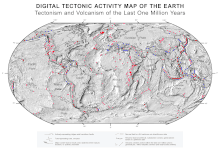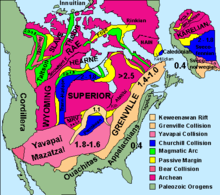Maritime.
Most of the western Europe and Great Britain has a Temperate or Mesothermal climate – what’s known as a type C climate. More specifically the region has a largely Oceanic or Maritime Temperate climate – type Cfb.
Am I having a deja-vu, I'm sure I just answered this same question
Climate of Europe
From Wikipedia, the free encyclopedia

Biomes of Europe and surrounding regions:
tundra alpine tundra taiga montane forest
temperate broadleaf forest mediterranean forest temperate steppe dry steppe
tundra alpine tundra taiga montane forest
temperate broadleaf forest mediterranean forest temperate steppe dry steppe
Contents |
Overview
Prevailing westerlies (which squeeze between the Icelandic Low and Azores High) bring rain from the Atlantic ocean, the position moves southward during winter and rises further north in summer. The Siberian High brings colder, drier weather from the east. Away from the sea, parts of Central and Eastern Europe have a borderline Oceanic/Continental Climate as they are milder than they would otherwise be due to the open ice-free waters of the North/Baltic Seas and lack of mountain barriers, but are not as mild as the Western coasts, and are subject to more frequent snowfalls. The Danube region through the Balkans, Ukraine and Southern Russia have a continental climate with cold winters and hotter summers, some areas bordering on a dry steppe climate with only certain months of higher precipitation, often due to thunderstorms. Some coastal regions of the Black Sea have microclimates that are borderline humid continental/humid subtroptropical (or sometimes just the latter) due to the winters being mild enough and summer precipitation being high enough to preclude them as being Mediterranean, for example in Sochi, Russia. On the plains of Northern European Russia up to the Ural Mountains, the winter climate is much harsher than elsewhere in Europe with many months of below freezing average temperatures but with periods of hot summer weather.Gulf Stream
Main article: Gulf Stream
See also: North Atlantic Drift
The climate is of Western Europe is milder in comparison to other
areas of the same latitude around the globe due to the influence of the Gulf Stream.
Mediterranean waters are not as deep as the large oceans, allowing it
to become a heat store tempering winters along its coastlines.[1]
The Gulf Stream is nicknamed "Europe's central heating", because it
makes Europe's climate warmer and wetter than it would otherwise be. The
North Atlantic Oscillation and Arctic Oscillation
also play large roles in determining the amount of Arctic air that
penetrates southward diminishing the Gulfstream's warming effects during
winter. [2]Comparing to other parts of the globe, the average temperature throughout the year in Naples is 16 °C (60.8 °F), while it is 13 °C (55.8 °F) in New York City, virtually the same latitude. Berlin, Germany; Calgary, Canada; and Irkutsk, in the Asian part of Russia, lie on around the same latitude; January temperatures in Berlin average around 8 °C (15 °F) higher than those in Calgary (although Calgary sits 1200m higher in altitude), and they are almost 22 °C (40 °F) higher than average temperatures in Irkutsk.[1] This difference is even larger on the northern part of the continent; the January average in Brønnøysund, Norway,[3] is almost 15 °C warmer than the January average in Nome, Alaska,[4] both towns are situated upwind on the west coast of the continents at 65°N, and as much as 42°C warmer than January average in Yakutsk which is actually slightly further south. Further south the oceanic climate of Europe compares thermally to North America, at around 48°N Rennes, France has about an equal average temperature throughout the year to Seattle, Washington, although the latter has drier summers with much wetter winters [5
Europe Climate
Of all of Europe’s advantages, none stand out as much as Europe’s mild and temperate climate [euclimat]. At first glance it would appear to be a harsh and cold climate, due to its northerly position on the globe [wwoutsm] (most of the continental land mass lies north of New York City). But winters in Madrid and Paris are less severe than those in New York and Boston. The reasons for Europe’s mild climate are due to two factors; prevailing westerly winds and the North Atlantic Drift ocean current [euocncur].
Europe’s northerly location places it in the prevailing westerly wind belt. This brings mild maritime air from the Atlantic modifying the winters and summers (Africa’s dry land mass lies just across the Mediterranean). These prevailing winds also prevent bitterly cold arctic air from penetrating into the continent instead they sweep into Russia, which does experience bitterly cold winters. Only occasionally, due to changes in jet stream currents, does arctic air penetrate all the way to the Mediterranean. Instead of continental polar air masses, Europe is dominated by cool maritime air from the Atlantic.
Adding to the moderate climate, ocean temperatures are warmer than what would be expected at this location. This is due to the North Atlantic Drift [euocncur]. This is a warm water ocean current, an extension of the Gulf Stream, that originates in the tropical Atlantic, Caribbean Sea, and the Gulf of Mexico. As the current moves past Cape Hatteras, North Carolina, it moves northeastward towards the British Isles, Scandinavia, and even into the Arctic Ocean where the port of Murmansk [rufb] (This Russia port remains open in the winter, albeit with ice breaker help, despite being located above the Arctic Circle.)
The warm water (relatively speaking) of the North Atlantic Drift warms the air masses that invade Europe from the west and provides enough moisture and instability that gives much of Europe beneficial precipitation [eupreces].
These climatic controls help to explain Europe’s climate of not too many temperature extremes and adequate precipitation. Most European climate [euclimat] falls under two classifications; Marine West Coast (Cfb) and Mediterranean (Csa).
Marine West Coast climate is typically found along the west coasts of continents (typically between 40o and 60o latitude). This climate covers much of Northwestern Europe including the British Isles, but excluding Scandinavia, Eastern Germany, Poland and Switzerland.
The other dominant climate in Europe is the Mediterranean (Csa, Csb). This climate [euclimat] covers much of Southern Europe including most of the Iberian Peninsula [iberia], Southern France, Southern Italy and Greece. It is characterized by hot, nearly rainless summers, and mild rainy winters. It is a pleasant climate and is conductive to the bountiful agriculture produce produced in this region. Much of the world’s most renowned wines are produced in this region and in other regions of the world [wwclimc] (i.e., California) where this climate occurs.





 Dome
mountains are the result of a great amount of melted rock (magma)
pushing its way up under the earth crust. Without
actually erupting onto the surface, the magma pushes up overlaying
rock layers. At some point,
the magma cools and forms hardened rock. The uplifted area created by
rising magma is called a
dome because of looking like the top half of a sphere (ball). The rock
layers over the hardened magma are warped upward to form the
dome. But the rock layers of the surrounding area remain flat.
Dome
mountains are the result of a great amount of melted rock (magma)
pushing its way up under the earth crust. Without
actually erupting onto the surface, the magma pushes up overlaying
rock layers. At some point,
the magma cools and forms hardened rock. The uplifted area created by
rising magma is called a
dome because of looking like the top half of a sphere (ball). The rock
layers over the hardened magma are warped upward to form the
dome. But the rock layers of the surrounding area remain flat.
 Volcanic Mountains
Volcanic Mountains 






 Plate tectonics is the theory that Earth's outer layer is
made up of plates, which have moved throughout Earth's history. The theory
explains the how and why behind mountains, volcanoes, and earthquakes, as well
as how, long ago, similar animals could have lived at the same time on what are
now widely separated continents.
Plate tectonics is the theory that Earth's outer layer is
made up of plates, which have moved throughout Earth's history. The theory
explains the how and why behind mountains, volcanoes, and earthquakes, as well
as how, long ago, similar animals could have lived at the same time on what are
now widely separated continents.












